BBC's Blog, page 29
December 19, 2012
Mr Stink in 3D
Just for any new readers, I am head of technology for BBC HD & 3D and this is an update on the next phase of the BBC 3D trial. We have now moved from sport, music and animation to drama!
Mr Stink is a TV adaptation of the book by David Walliams. I won't give anything away in the post for those who love the book and for those who have never heard of it - just watch!
In this post I want to give you an overview of some the technology and processes used during the making of Mr Stink with comments from a few of the people involved.
Mr Stink transmits in 2D on BBC One & BBC One HD on Sunday 23 December at 6.30 and is repeated on Boxing Day at 12.40. The 3D transmission is on BBC HD on Sunday 23 December at 6.30 and shortly after on BBC iPlayer for seven days
[image error]
Mr Stink (Hugh Bonneville) and Chloe (Nell Toger-Free) in Mr Stink
Mr Stink is the first programme we've done during the trial where the 2D and 3D versions were shot at the same time with the 2D being taken from one of the 3D cameras. The cameras were mounted on mirror rigs and for those interested in the details, these were a 3ality Technica Atom and a P+S TECHNIK Freestyle rig, each fitted with two RED Epic cameras and Angenieux Optimo matched lenses.
This is what , the director of photography (DoP) working on Mr Stink, thought of idea to shoot in 3D:
It was a great opportunity for me to shoot a film that has been specifically designed for 3D. As a cinematographer it is a very different approach both logistically and creatively, and it was important in preproduction to work out the do's and don'ts. Having a close collaboration with the stereographer and the director meant we really embraced the strengths of 3D and found a visual style that works especially for this comedy genre. We liked slightly cartoonish and quirky compositions, like in the films of Wes Anderson or the Coen Brothers, and the fact that 3D works particularly well with wide angles even for close ups suited the style we were after perfectly.
[image error]
One of the camera rigs with DoP Philipp Blaubach!
Chris Parks from Vision3 was the stereo supervisor on the programme and also commented;
The choice of rigs and cameras was determined by a number of factors. We wanted to be able to change setups quickly so we chose to use zooms as variable primes. We also wanted a reasonably small and light rig so we could be more mobile and wasn't too off-putting to actors. We also wanted it to be cost effective so that on certain days we could afford to bring in a second unit. The Atom allowed us to put on a larger mirror box so the DoP could use a 16mm lens with the Epic at five thousand. For monitoring we used a 46in JVC as we felt it was important for the director and DoP to be able to see the playback in as near to a real world situation as possible.
Mr Stink was framed for a wider aspect ratio than the normal 16:9. Philipp shot in the cinema aspect ratio that's sometimes referred to as 21:9 but more accurately it was actually 2.35:1. This gives black bars at the top and bottom that effectively become a new screen boundary. However as it's only an electronic boundary that allowed us to try some interesting effects.
Philipp said;
We composed the film for a 2.35 aspect ratio and during the depth grade there were a couple of instances where we could move the action into negative space and virtually make it overlap the letterbox. The 3D is especially effective in those moments as you feel the objects literally coming into your living room.
[image error]
Framing for 2.35:1 (3D is displayed using anaglyph if anyone wants a quick preview but, the programme will not be transmitted in anaglyph).
As I said earlier the programme was shot using a single camera rig with an occasional second rig. This is different to the multi-camera set-ups we've used for the studio and live programmes that have been in the trail so far. This meant that instead of the stereographer adjusting each camera to match the 3D depth during the shoot, a 'depth grade' process was added to the final post-production stage.
Just like a colour matching or grading session that adjusts the colour and exposure of each shot to make them match, the depth grade matches the amount of 3D in each shot so there are no sudden jumps on shot changes.
Again for interest, the programme used the company ONSIGHT's 'Mistika' equipment to carry out the colour and depth grade with colourist David Gonzalez Lozano and Philipp Blaubach (the DoP) along with Matthew Smith who was the stereographer on the project working under Chris.
Matthew was responsible for the on-set Stereo 3D decisions working closely with the director and DoP and followed this through to the depth grading session during the final post-production.
[image error]
The two TX lines
[image error]
Mistika screen shot (3D is displayed as anaglyph if anyone wants a quick preview but remember the programme will not be transmitted in anaglyph).
The last time I saw the programme was just before the final colour and depth grading sessions, so I won't see the final results until it's transmitted.
As usual I am really keen to get your reactions to the programme and what you thought of the 3D but I will be away over Christmas and for a week in the New Year so replies to comments may not be prompt until I'm back around 8 or 9 January. In the mean time I wish you all a very, very merry Christmas and a happy new year - in advance!
Andy Quested is chief technologist HD & 3D, BBC Technology.
3D transmissions over the Christmas period:
Mr Stink 23 December 6.30pm Remember to set your TV to Side by Side mode on the BBC HD Channel:
Killer Dinosaurs 25 December 2.10pm
Freeview Channel 102
Freesat Channel 109
Sky Channel 169
YouView Channel 102
Virgin Channel 187
December 18, 2012
Torch Relay: Building the site
My name is Mike Brown. I was the technical architect on the BBC's Torch Relay website.
Alongside my colleague Matthew Clark I was lucky enough to have the role leading the technical delivery.
If you can think back to the beginning of the 'summer', before the huge success of the Olympic and Paralympic games, you might remember the Torch Relay.
Back in mid-May thousands of people were chosen to run a short distance with the Olympic Flame and the country was temporarily gripped by the spectacle via #bbctorchcam.
[image error]
The Torch Relay site
My colleague Michael Burnett, product lead for the Torch Relay, published this blog at the time to explain some of the features we'd made available as part of the site.
The Torch relay played an important role in the delivery of the 2012 Olympic website and it wasn't by accident that it used the same video delivery pipeline, giving us critical information on performance and editorial workflow.
Like many websites, the effectiveness of the proposition belied some clever technology - resourcefulness in the face of some tricky problems. We thought it only right to share it with you.
This blog talks in high level terms about technical architecture, and is probably of most interest to the slightly more technical user, but we've kept it as broad as possible.
Our requirements
Simply put, here's what we wanted to achieve;
To track the geographical location of the Olympic Flame and make this location available to users, both in terms of actual location and the route itself.
To allow users to watch live/catchup video coverage of the Torch including the ability to rewind live and to find the video of when the Torch passed through a particular location.
To allow users to determine how close the Torch comes to a location and when.
In a technology context then we needed to;
Get a video stream from the Torch location.
Get the location of the Torch itself.
Match them up.
Easy? Not quite.
This was a unique challenge, something the BBC hadn't tackled before. Seventy unrelenting days, a minimum of 12 hours a day left no room for soft launching software releases.
The video solution was a marvel in itself, both in terms of delivering the video signal from location to BBC Television Centre, and how we integrated with the Torch location to produce the compelling features on the website.
In fact we can't do justice to it in a single post. Roger Mosey - Project Director London 2012 - discusses some of the basics in his blog post, but for this post we'll concentrate on how we located the Torch itself.
Getting the location
[image error]
'Convoy mode'
For organisational purposes the Torch Relay is split into a number of 'modes'. For example, when the Torch is being driven from location to location in a vehicle (a converted horsebox!) this is known as 'convoy' mode.
The Torch often moves away from the designated 'running' route to a beauty spot or to a different or alternative mode of transport (on a train for example).
Unfortunately this presented us with a problem. At any given time we couldn't be sure where the Torch would be or what resources we would have available to track its location.
Convoy mode meant we would have the location of the BBC vehicle (and by proxy the Torch location) to help us the get the location but an alternative transport event could have been covered by any one of a number of Local BBC TV Crews.
To complicate matters further some of these events meant that we couldn't rely on the convoy vehicle location at all. Sometimes it would have to take a different route to the Torch altogether or on some days not be present at all (the Torch visited the Channel Islands and the Outer Hebrides amongst others where the convoy couldn't follow).
Added to this was the fact that because of the complexity of the route (calculated to visit a location close to 90% of the UK) we didn't have any significant data of the Torch's whereabouts on a daily basis by the time we had to sign off the application design.
We needed something flexible and ultimately something that we could get away with if it went wrong.
Would we lie to you?
Of course not, but we were at times more calculating with the accuracy of the Torch location - we had to be.
Most of the time we were able to bring you the 'real' location of the Torch but sometimes we just couldn't. In these situations we relied on the military precision within which the Torch Relay was scheduled to run.
So for example we would use realtime GPS data to locate the Torch when we knew we could comfortably get an accurate location.
As soon as we moved to a phase of the relay where we couldn't rely on the BBC vehicle to provide a location we would switch to playback mode.
This involved interpolating timing points using the expected average speed for that section. It enabled us to playback the torch location with some degree of confidence at any non-convoy section.
This generation of the route was a slow process. Our production of the correct route playback geometry was typically no more than 7-10 days ahead of the current day at any given time.
Not getting lost
The popularity with which the Torch Relay was met soon caused us problems. It quickly became clear that try as they might, keeping the Torch to schedule was going to be extremely difficult due to the large numbers visiting the route.
Seamlessly snapping the torch location between a 'pre-created' route and its real location would have involved a complex set of heuristics - more complex than the business logic we had already implemented to, for example, mark a location as not having been visited even when the route twisted and turned in close proximity to that location.
Instead we opted for a set of manual controls via a RESTful API that allowed us to modify its location. Here's an example.
Service Summary
[image error]
This worked beautifully. It afforded us the ability to lose signal completely, for the incoming signal to be wildly inaccurate when the convoy vehicle couldn't follow the Torch and for us to jump big chunks of time and/or distance to keep the live point as accurate as we could make it.
How did we do?
As you would expect from an event of this type the traffic followed a fairly typical long-running event model but with some interesting patterns.
Olympic hysteria generated an enormous initial spike - Day One (19th May) - Land's End to Plymouth - gave us over one million page requests with upwards of 250,000 unique users.
A few days in we saw the biggest consistent audiences - in fact all the biggest days are in that first week, but after that we started to see traffic tailing off from that initial peak.
What is interesting is that one could draw correlations between the degree of population density and traffic levels. If this is the case it would fit very well with the intensely 'local flavour of the Torch.
People relatively close to the Torch on that day were perhaps more likely to follow the relay than those further away.
For example on our pages that reflected a single given day (rather than the current day) we saw the highest overall numbers from each of the London days. On these days the torch travelled over a much smaller geographic area in a more compact form. Likewise we saw more rural routes with significantly lower figures.
It should also be noted there are high traffic days which can be attributed to 'celebrity' torchbearers.
Tidying up after ourselves
One final thing worth discussing, is something not often discussed!
Of paramount importance to the 2012 project is how to tidy up after yourself and be a good temporary-product citizen on a platform of finite capacity.
The BBC platform is a large and complex technology stack and services millions of requests per day - it's not sustainable to continue to consume resources and place dependencies on services given very low demand.
The Torch relay is a largely temporary product and can't continue to function in its existing form and so it was designed very much with this in mind - at all stages of the application design we used existing components where possible.
As an example have a look at the diagrams below.
Before
The first shows (a broadly accurate) architecture we originally designed - this made use of existing services wherever possible to reduce costs and simplify decommissioning the service. As you can see there are a large number of dependencies and services in the request chain.
[image error]
Original application design
As 2012 team members move onto new projects we cannot support this number of dependencies, or more importantly be a dependency on these services as they migrate and modify.
After
Here we have reduced the number of dependencies without compromising too much of the audience proposition.
The blue lines represent requests to a set of 'stubbed' or flattened (flattening in this case is the process of taking the content of an HTTP request and saving it as a 'flat' file on disk - allowing us to switch off the 'live' API) assets which were previously serviced via the red lines
This change has been implemented simply by looking at the file system rather than using HTTP. The code is largely untouched.
Some minor modifications to the user interface have been put in place (people no longer need to search for how close the Torch comes to them for example) and we're pretty much done.
It's often overlooked but how you leave a platform can be just as important as the work you do to get there in the first place.
[image error]
Design with reduced number of dependencies
Summary
The Torch Relay was a fantastic project to work on and yet another reason why working on technical architecture at the BBC can be so rewarding.
It represented some unusual, key technical challenges to Future Media and the wider BBC and was a great example of how a flexible approach to developing and deploying software can be successful when there is very little confidence in the event you are building for.
We explicitly designed a site that could provide a soak test for the BBC Olympic video platform and be cleanly downgraded and archived releasing dependencies on core BBC services.
Further to that the BBC gained some key technical understanding, valuable both in the run up to the Olympics and beyond.
As broadcast technology becomes more mobile and more integrated with IP delivery the architecture used to deliver the Torch Relay may provide a glimpse into the future of how we deliver fast moving events and provide that key 'local' flavour so important to putting the audience at the heart of the story.
Mike Brown was previously technical architect on the Torch Relay website and is now Technical Lead for BBC Connected Studio.
December 14, 2012
What's on BBC Red Button 15-22 December

We've got lots going on this week, including extensive coverage of the biggest-ever Sports Personality of the Year ceremony, a preview of this year's Christmas Doctor Who episode and festive treats for kids from CBeebies and CBBC. Throw in some top-notch sporting action, including live NFL and World Cup dressage, as well as a festive bonus for Casualty fans, and you've got the makings of an outstanding week on Red Button.
Here's a look at what's in store - and if you want to stay updated on Red Button throughout the week, be sure to follow us on Twitter.
Sports Personality of the Year 2012

Clare Balding, Gary Lineker and Sue Barker host this year's ceremony
On Sunday night the Red Button is the place to be for extensive coverage of the BBC's biggest-ever Sports Personality of the Year ceremony, which takes place at London's ExCel Arena - the venue where Nicola Adams, Luke Campbell, Jade Jones and Anthony Joshua struck gold this summer.
Our coverage starts at 6.15pm, as Helen Skelton and Olly Foster report from the red carpet ahead of the big night. We've also got enhanced coverage of the SPOTY ceremony from 7.35pm, featuring additional information about the nominees and the opportunity to tweet your thoughts about the show, and we round off the evening with a look back at the big talking points immediately after the show finishes.
Available on Freesat/Sky/Virgin Media/Freeview:
Sun 16 Dec, 6.15pm-11.30pm
Doctor Who

Madame Vastra has a mystery to solve
The Doctor returns to BBC One on Christmas Day - and Red Button viewers can get ready for this year's festive adventure by watching a mini-episode.
Madame Vastra, accompanied by her loyal companions Jenny and Strax, is called upon to investigate a Victorian murder mystery. But where is the Doctor?
Available on Freesat/Sky/Virgin Media/Freeview:
Thur 20 Dec, 7.30pm-8.55pm, 10.30pm-6am
Fri 21 Dec, 9pm-6am
Sat 22 Dec, 6pm-6.30pm, 7.55pm-8.50pm, 10.05pm-1.25am
CBBC Extra Christmas Cracker

Enjoy a feast of festive fun with CBBC
Get into the festive spirit with the CBBC Extra Christmas Cracker! Press Red on the CBBC Channel to join Ben and Dodge as they get ready for Christmas and serve up some exclusive goodies. See what happened when Hacker visited his hometown of Wigan to spread his very own seasonal greetings and join Dodge as he spends Christmas time with his buddies at a dog kennel. Plus we have a sneak peek of the 12 Again Christmas Special and a look behind the scenes of Friday Download.
Available on Freesat/Sky/Virgin Media/Freeview:
Mon 17 Dec, 7am-7.30pm
Tue 18 Dec, 7am-3pm
Wed 19 Dec, 7am-11am, 3pm-7.30pm
Thu 20 Dec, 7am-11am, 2pm-7.30pm
CBeebies Christmas Karaoke
If you love Christmas and you like singing then press red for the CBeebies Christmas Karaoke. You can sing along to songs from a whole host of CBeebies Christmas specials including Mr Bloom's Nursery, Baby Jake and Mike the Knight. Why not get your family and friends to join in too and follow the words as they appear on your screen?
Go on, press red... You know you want to!
Available on Freesat/Sky/Virgin Media/Freeview:
Fri 21 Dec, 6am-2pm
Sat 22 Dec, 6am-2.30pm
Casualty
It's Christmas Eve in Casualty and the nurses from Holby ED are heading out to party. But Fletch dreads all the stress that the big day brings... Join us on the Red Button for this special mini episode of your favourite hospital drama with a festive feel.
Available on Freesat/Sky/Virgin Media/Freeview:
Sat 15 Dec, 10pm-1am
Strictly Come Dancing
The semi-finals have arrived, with five couples still in the running for the title - but only four can make it through to the final. Press red during the live show to hear Karen Hardy's expert analysis of their efforts, as the well as the views of 2011 contestant and BBC football pundit Robbie Savage. Watch this video for five great reasons to press red.
Available on Freesat/Sky/Virgin Media/Freeview:
Sat 15 Dec, 6.30pm-8.15pm
Muse
We welcome rock stars and Olympic soundtrack creators Muse on to the Red Button for highlights of their spectacular gig at the BBC Radio Theatre for Radio 2 In Concert. The ever-energetic band play classic tracks and speak to Jo Whiley backstage.
Available on Freesat/Sky/Virgin Media/Freeview:
Sat 15 Dec, 6am-2.30pm
Sun 16 Dec, 11.30pm-6am
Mon 17 Dec, 6am-7am, 7.30pm-1.25am
BBC Sport
Catch up on all the latest Sport here on the Red Button.
This week's highlights include:
Live World Cup Dressage from London Olympia on Tuesday night
Live NFL on Monday night, as the New York Jets host the Tennessee Titans
Relive all the action from the final of the Club World Cup on Sunday afternoon
For the latest information refer to the BBC Sport website.
**Note all Red Button times are subject to change at short notice
Have your say on BBC Online and BBC Red Button
The BBC Trust carries out an in-depth review of each of the BBC's services at least once every five years. This time the Trust is looking at BBC Online and BBC Red Button Services.
The Trust wants your views and suggestions on these services and how they can be improved. There is also space in the consultation to raise any other points not covered by our questions. The consultation is open until 23rd January 2013.
To find out more about the consultation and how to take part, visit the BBC Trust site: BBC Online and BBC Red Button Service Review
If you would like a paper version sent to you, email onlineandredbutton@bbc.co.uk or call 0800 0680 116.
To request the questions in audio or braille please call 0800 0680 116 or textphone 0800 0153 350.
Large print is also available to download via the BBC Trust site:
BBC Online and BBC Red Button Service Review
CBeebies Red Button
CBeebies Red Button welcomes younger viewers and grown-ups with a sense of adventure to the big, bright and fun world of CBeebies interactive!
Your children's favourite characters are at the heart of the interactive TV experience. Satellite and digital terrestrial viewers will have slightly different offerings from one another. This has enabled the Red Button team to offer the best games tailored to each system.
CBeebies Red Button is available on the CBeebies channel, and via page 5900 on other channels.
Visit the CBeebies website to find out more.
Available on Freeview and Sky only
If you'd like to stay up-to-date with more news from the Red Button, follow us on Twitter.
December 13, 2012
BBC iPlayer Radio: two months on
Hi, I'm the Executive Product Manager for BBC iPlayer Radio.
The last two months have been exciting for BBC Radio on digital platforms: in October we launched BBC iPlayer Radio, bringing together all of the BBC's English language radio stations (57 of them!) into one coherent digital product across desktop, tablet and mobile.
We launched our first smartphone application for iOS devices, which has now been downloaded over one million times, easily surpassing our expectations.
We continue to work hard on releasing an app for Android devices which will offer a great experience, and that continues to be our number one priority. More on the mobile app on my colleague James Simcock's blog post.
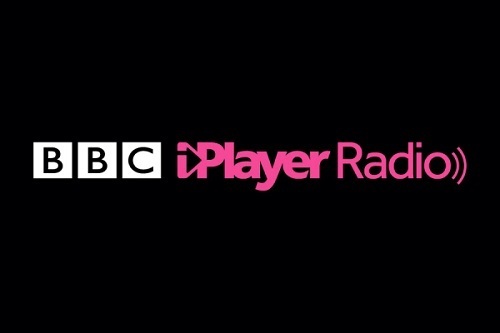
BBC iPlayer Radio across all platforms now reaches around 6 million UK unique browsers per week, breaking all previous records, which is 30% up compared to October 2011. We are seeing a significant increase (almost one fifth, 18%) in traffic to the product homepage, which receives over a million unique browsers per week, and which in turn is sending higher numbers of people to the individual station sites: Radio 2 saw a 31% increase between September and November, whilst Radio 4 saw a 9% increase.
Generally we are seeing an increase in the proportion of our total visitor traffic coming from mobile and tablet devices, with now almost one quarter (24%) coming from mobiles, and 10% from tablets. This is in part down to the new mobile app, but also people browsing and listening via their phone's browser.

iPlayer Radio on mobile web
Another interesting change we are seeing is an increase in visitors to both Categories and Schedules. The use of Categories has increased by 83% between September and November (although the actual numbers are still relatively low) whilst Schedules increased by 10%. This is partly due to their prominence on the product homepage and the navigation bar which runs across all pages, and partly due to visitors using new ways to find the content they are looking for. Also, perhaps not surprisingly, more people are using the left/right arrows to navigate through the tabs on station homepages than are clicking on the tab names.
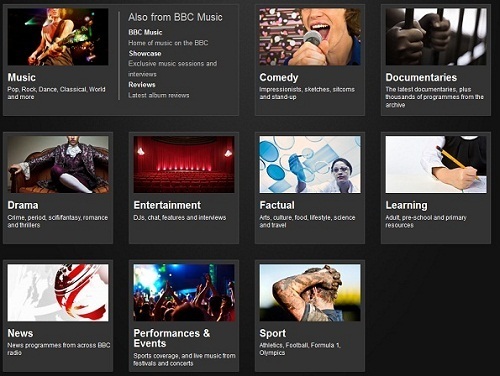
iPlayer Radio catagories
Audience Feedback
The majority of the feedback has been great, with constructive suggestions for how we might improve the product in future releases. There are a number of key feedback themes emerging:
1. Some people miss the overview of what is on-air across all stations. This was previously more obvious on the old homepage (although we still have that view here but it is less obvious and visual than before) and being able to listen live directly from this page.
2. Some listeners, especially from Radio 4, have found it harder to find the programmes they love and want to listen to on-demand, whether using the search facility or browsing.
3. A number of people were put off using the "Favourites" feature because initially it only allowed you to add a single episode instead of a whole series to your personalised list of favourite programmes.
What we've done since launch
This feedback has been extremely useful, and has already led to some changes which we have implemented.
1. The new product homepage was certainly a radical change from what went before it, so I wasn't surprised that some listeners missed the previous page. Our thinking was to make a very simple page which allowed users to quickly get to where they wanted to go, without presenting an overload of information.
To address the specific concern around seeing what is on-air now across all the stations, we are looking at making this much more obvious, so expect to see some changes in the new year. We have also made the homepage tabs addressable, meaning you can bookmark or share them. For example: http://www.bbc.co.uk/radio/#schedules.
2. To help listeners find programmes we have made the "Programmes A-Z" link more prominent, added in the key programmes to the programmes drop down in the navigation tool bar, added more categories, and made a significant change to the way our programme search works, meaning you no-longer have to type the exact programme title, and search results show programmes even if they are no longer available to listen to (after 7 days for most programmes).
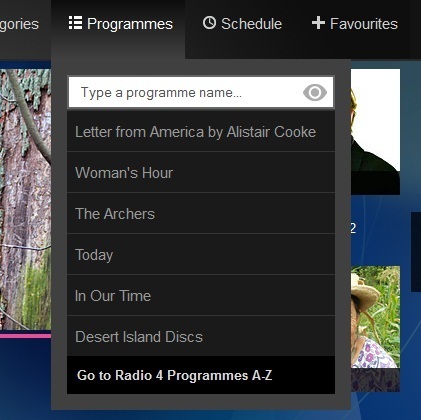
Programme A - Z
3. To make the product a more simple and personalised experience, you can now follow a programme series rather than just a specific episode. So when you click on Favourites in the toolbar, you see a list of the programmes you are following, not just individual episode which may have expired.
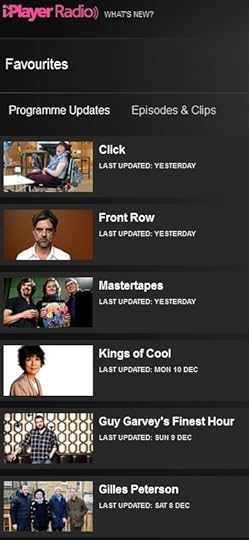
iPlayer Radio Favourites
On top of this, we have now enabled playback of audio clips (sections of whole programmes) so users on smart phones can listen on the move. This is particularly useful for those who want something short to listen to whilst out and about.
Please continue to give us your feedback via our Feedback page and do follow us on Twitter for frequent updates.
Chris Kimber is Executive Product Manager, Programmes and On Demand, BBC Future Media
December 12, 2012
Android: An update
The BBC launched the BBC Media Player for Android nearly three months ago. Since then it has been downloaded to more than one million Android phones and tablets.
In this short period of time we've witnessed a dramatic change in the Android platform and in BBC usage on the platform.
When we launched, seven inch Android tablets weren't driving significant usage. Fast forward three months and the Kindle Fire HD and the Nexus 7 are now both firmly in the top five Android devices for BBC iPlayer and the BBC Media Player.
The Android platform is extremely important to the BBC and our audience and engineering for it requires an ongoing commitment.
To that end I have a significant engineering team working on both the Android media playback experience and BBC iPlayer application on Android devices.
We have three goals:
1. Improve the playback experience.
2. Achieve feature parity between iOS and Android.
3. Support a variety of screen sizes.
We're not going to get there overnight, however starting before Christmas and continuing over the coming months we have a series of releases that will make the BBC iPlayer experience on Android devices more appealing and engaging.
Improving the playback experience
Android as a platform is becoming increasingly complex and fragmented with a huge difference between video playback capabilities across the 1500+ Android devices.
Rather than use the one-size-fits-all approach that has worked on iOS we are grouping Android devices into classifications based on their capabilities.
For example, for devices which don't support advanced video playback we will have to deliver lower quality video streams.
For devices with bigger screens and capable of advanced playback we'll enable high quality video encodes along the lines of those on iOS devices.
Since we can't rely on adaptive bitrate yet we aim to start at a higher quality encode for larger screens and a lower quality encode for smaller ones.
We will also take network into consideration so we'll start with higher quality on WiFi and 4G networks and lower quality over 3G.
These improvements start before Christmas with a new high quality media encode when using WiFi.
There is still plenty of work ongoing and we'll be releasing further updates throughout 2013 as we deliver on the rest of this ambition.
Achieving feature parity between iOS and Android
Thus far we've found ourselves releasing products first on iOS because of the challenges of supporting a variety of Android platform versions and devices.
Of course we want to deliver products simultaneously on iOS and Android and we are striving to fill gaps such as mobile downloads and launching iPlayer Radio on Android. This will take time.
First and foremost we'll focus on video quality but rest assured we're working on filling gaps in feature and product parity at the same time.
Since the fragmentation on Android requires more work than a single implementation on iOS we've also made investments in engineering so Android and iOS can deliver at broadly the same pace.
The upcoming BBC iPlayer release on Android introduces an updated UI that provides the foundations for the team to build future features.
In addition you'll find you can now listen to radio shows in the iPlayer app with your screen turned off while answering email or using other applications on your Android device.
Supporting a breadth of devices
Providing support across all Android devices is complex due to the variety of devices, operating system versions and screen sizes.
Before Christmas we're going to enable iPlayer on Jellybean 4.2 and offer a richer tablet experience on devices such as the Nexus 7 and Kindle Fire HD.
Thereafter--with Adobe and Google's help--we'll improve playback on devices like the Sony Xperia Arc.
Into 2013 we'll prioritise the most popular Android devices so we can deliver the best experience for the biggest audience. As you can see this is just the beginning.
I hope the upcoming pre-Christmas releases make opening new presents and using existing Android devices more pleasurable. The experience will continue to get even better as we move into the new year.
Dave Price is the Head of BBC iPlayer, Programmes and On Demand, BBC Future Media.
New TV Homepage
I'm Matt Humphreys and I work in the TV & iPlayer editorial team. Part of my role is to work with the TV channel teams and programme makers in BBC Vision to develop curated offerings of our programmes and additional online content.
Today marks the next phase in the development of the TV site across web, mobile and tablet following the re-launch of our TV channel sites earlier in the year.
The TV homepage is regularly accessed by in excess of 800,000 browsers on a weekly basis and offers routes into online TV content beyond the core catch-up service on BBC iPlayer, showcasing exclusive short form video, archive programmes and blogs.
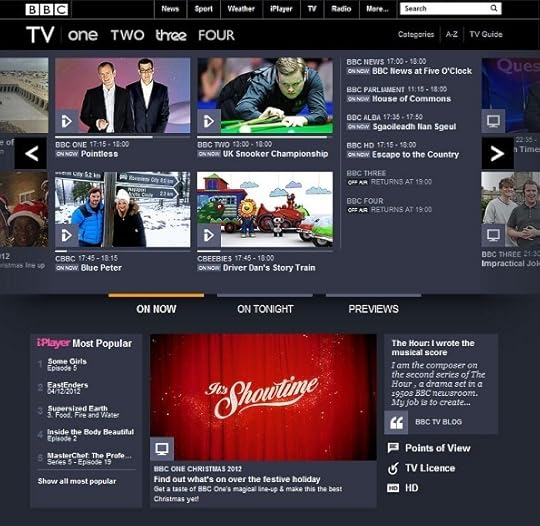
New TV hompeage
As with our channel sites, the new pages that make up the TV site are responsively designed, delivering a consistent experience across the different screens, including the live streams of all our broadcast TV channels.
The carousel released in the channel pages has been modified and implemented on the TV homepage which, along with the new navigation bar, pulls the sites together into a unified TV experience that complements our iPlayer offering.
Working alongside the TV & iPlayer product team our aim was to put live viewing at the heart of the TV site whilst continuing to enable programme discovery via schedules, aggregations and curated promotions.
In addition the launch offered an opportunity to bring short form video content to the fore, which audiences are increasingly accessing across BBC Online.
When the TV site was last re-launched in 2008 live streams of BBC One and BBC Two were still in the pipeline. Today, live usage accounts for more than one in eight requests in iPlayer, much of which is driven by event and live programming.
The live channel streams are front and centre on the new homepage and point directly to the simulcast pages. The live streams for BBC One and Two are fixed at the top of the On Now section with CBBC and CBeebies featured during the day before they are replaced by BBC Three and BBC Four at 7pm.
The video player for the live streams now offers improved features which build on iPlayer's Live Restart functionality and the segmentation of live video streams that proved so popular on BBC Sport's Olympics coverage.
If you've missed the start of the programme then the Live Restart option allows you to jump to the start (up to two hours after it has begun) or you can now jump to the start of other programmes easily via the new programme points along the bottom of the player.
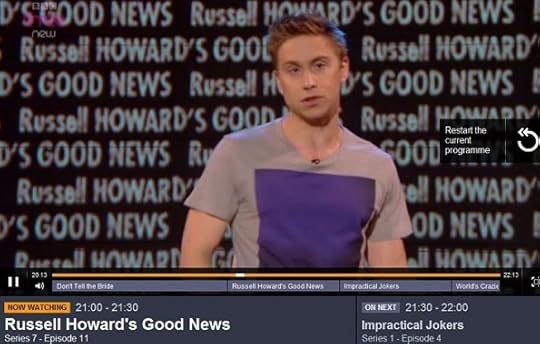
Live channel streams
Almost 30% of visitors to the simulcast pages in November 2012 used the Live Restart feature and the addition of programme points offers a quick route into programme catch up for audiences.
For audiences browsing or looking for specific programme content the TV Guide has been recently updated to enable easier navigation across the schedule and is now linked to prominently from the main navigation bar on all the TV and channel pages.
The new calendar navigation makes moving back and forth across the schedule easier. If you're after a list view of a specific channel then just click on the channel logo to go to today's full schedule, for example BBC Four.
One of the key changes we made from the previous TV homepage was to remove the On Next information that was located in the EPG style strip at the top of the page.
User testing carried out in the last 12 months showed that people looking for schedule information were focused primarily on planning viewing for that evening. This has been prioritised in the On Tonight section of the new homepage which pulls out programmes from the peak schedules of the four main channels.
Schedules for BBC One and BBC Two currently default to London and England variations and our priority for the next phase of the TV site's development will be to integrate regional preferences seamlessly into the TV and channel pages.
Regional schedules can be accessed through the TV Guide via the location selector at the foot of the page and also through the individual schedule views for BBC One and BBC Two, but we will be implementing improvements in future versions of the site to enable the following;
- Remember your location setting on the TV Guide.
- Default the TV channel pages to display schedules based on your regional setting.
- Welsh and Gaelic language options.
Beyond what's on right now and what's on tonight another of our objectives was to surface more of our preview content, primarily in the form of video clips and trails.

Find out about upcoming content
Requests for short form video, predominantly in the form of extracts from our TV programmes, generate approximately 1.4 million requests a week and are growing at a healthy rate.
We already curate some of these as preview clips or 'best moments' (post broadcast) on the channel pages but we have dedicated space on the new TV homepage to highlight some our most anticipated programmes and better expose the breadth of upcoming content from across the schedule.
We'll be delving into the feedback we get via our site surveys over the coming weeks but of course we look forward to hearing your immediate reactions to the new site in the comments below.
Matt Humphreys is Editorial Lead for Channels & Programmes.
Fifteen years of BBC Online

This week marks an important anniversary for the BBC, online. Fifteen years ago bbc.co.uk first went live to the public and BBC Online was born.
I'm Ralph Rivera the Director of Future Media at the BBC and I wanted to look back at history of the BBC's websites and tell you a bit more about what this anniversary means to us.
Innovation is at the heart of the BBC and has been since its inception. From when the BBC opened its first radio station in 1922 and launched the world's first regular television service in 1936 few could have imagined just what impact broadcasting would make on our everyday lives.
Whether it's stereo FM, the BBC online, digital TV, HDTV, or 3DTV innovation has driven the BBC from the start. A few of my colleagues and I tried to sum up how we feel about innovation here at the BBC in the following video.
In order to see this content you need to have both Javascript enabled and Flash installed. Visit BBC Webwise for full instructions
Innovation at the BBC
Just as radio and TV did before it, the digital revolution has fundamentally changed how our audiences access news, information and programmes.
As one of the first major organisations in the UK to embrace the web the birth of the BBC's websites 15 years ago is an important milestone in that evolution.
Our first web pages were developed from 1994 onwards as chronologued by Brandon Butterworth , but it wasn't until December 1997 that bbc.co.uk was officially launched.
Since this first online gateway in to the BBC we have continued to innovate at the cutting edge of web design and development.
From the BBC News, Sport and Weather sites to the launch of BBC iPlayer on Christmas day in 2007, the vast majority of the BBC's content and programmes are now available for our audiences to access when they want, wherever they are, on four screens - the PC, mobile, tablet and internet connected TV.
We've seen major growth in our online audience over this time going from 3.9 million UK adults per week in September 2002 to 22.7 million UK adults per week a decade later in September 2012 with an ever increasing number accessing our services via non-PC devices.
Last week we surveyed a representative sample of 9,200 BBC website users and asked them to choose from the top moments over the past 15 years of BBC Online.
Of those surveyed 50% said their top moment was the launch of BBC iPlayer, 15% chose the launch of the BBC website in 1997, 8% said the BBC's first truly digital Olympics at the London 2012 Games this summer and 5% the launch of websites for children of all different ages - Cbeebies and CBBC.
In 15 short years our websites are now at the heart of BBC broadcasting and have fundamentally changed news gathering and distribution, programme research and production and how our audiences share, interact, engage and get immersed in BBC content.
The pace of change is rapid - looking back just five years smartphones were in their infancy, there were no apps, tablets or internet-connected TVs - and part of the role of the BBC is to innovate at scale and bring the audience with us as the internet and digital platforms develop.
Just as the Queen's coronation in 1953 brought TV to mainstream audiences, the London 2012 Olympic Games this summer brought digital to audiences across the UK and around the world and set a new benchmark for innovation.
This is now the starting point from which we'll build in 2013 and beyond. We're looking ahead at an extremely exciting future just as we mark a milestone in our past.
I'd love to hear your thoughts and memories from the past 15 years in the comments on this blog and hear about where you think we may go in the future.
More information on the 15th anniversary of the BBC's websites is available at the following links.
- History of the BBC.
- Interview with John Birt on the early days of online, and the decision to launch the BBC's websites.
- A gallery and timeline from BBC News Online with key moments from the history of the site.
- An overview of links and videos marking 15 years of the BBC's websites.
Ralph Rivera is the Director of BBC Future Media.
December 7, 2012
What's on BBC Red Button 8 - 15 December

It's been an exciting week for us here on the Red Button. As well as bringing you a raft of great new specials, we've also taken our first step into the future with the launch of the BBC's Connected Red Button. This reinvented version of our service brings together TV, radio and online with one, simple press of a red button. It's the start of the things to come - find out more on this blog from the team behind it.
Muse 
Muse play for Radio 2 in Concert
We welcome rock stars and Olympic soundtrack creators Muse on to the Red Button this week for highlights of their spectacular gig at the BBC Radio Theatre for Radio 2 In Concert. The ever-energetic band play classic tracks and speak to Jo Whiley backstage.
Available on Freesat/Sky/Virgin Media/Freeview:
Thur 13 Dec, 9.30pm - Sat 2.30pm
Casualty

It's Christmas time and the Casualty characters are celebrating
It's Christmas Eve in Casualty and the nurses from Holby ED are heading out to party. But Fletch dreads all the stress that the big day brings... Join us on the Red Button for this special mini episode of your favourite hospital drama with a festive feel. Available on Freesat/Sky/Virgin Media/Freeview: Sat 15 Dec, 10pm-1am
Asian Network Rewind 2012

Madhuri Dixit is among the stars to feature in the Asian Network highlights
Relive the biggest acts, key highlights and best performances from the BBC Asian Network coming up on the Red Button this week - watch Shah Rukh Khan, Madhuri Dixit and Rahat Fateh Ali Khan plus a whole host of stars as BBC Asian Network takes a look back at an action-packed 2012.
Find out what's coming up and when here.
Available on Freesat/Sky/Virgin Media/Freeview:
Sat 8 Dec, 6am-2.30pm, 7.55pm-9.55pm, 11pm-1am
Sun 9 Dec, 12pm-5pm, 6pm-7.35pm, 8.40pm-6am
Mon 10 Dec, 6am-1.25am
Tue 11 Dec, 5am-6am
Wed 12 Dec, Midnight-10.15am, 12.30pm-7.30pm, 10pm-6am
Thu 13 Dec, 6am-10.15am, 12.30pm-9.30pm
Antiques Roadshow Play-Along Game
Are you one of the 1.5 million people who've played along with our Antiques Roadshow game? If so, you'll know how much fun it is to join Fiona and the team to guess the value of the items featured in the programme. If you haven't played yet, then don't miss your chance this Sunday and find out if you're a novice, enthusiast, connoisseur or expert - and don't forget to tweet your scores to #antiquesroadshow.
Available on Sky/Freeview:
Sun 9 Dec, 7:35pm-8.40pm
Strictly Come Dancing
It's quarter-finals weekend and Anton du Beke brings you strictly sparkling commentary on the Red Button this Saturday, joined by former contestant Nancy Dell'Olio. Press red for their inside take on how the dancers fare this week. And if you're looking for more insider information, why not head to the Strictly blog for the backstage gossip.
Available on Freesat/Sky/Virgin Media/Freeview:
Sat 8 Dec, 6.50pm-7.55pm
Sat 15 Dec, 6.30pm-8.15pm
BBC Sport
Catch up on all the latest Sport here on the Red Button.
Highlights
NFL: Houston Texans v New England Patriots
Football League Show
For the latest information refer to the BBC Sport website.
**Note all Red Button times are subject to change at short notice
Have your say on BBC Online and BBC Red Button
The BBC Trust carries out an in-depth review of each of the BBC's services at least once every five years. This time the Trust is looking at BBC Online and BBC Red Button Services.
The Trust wants your views and suggestions on these services and how they can be improved. There is also space in the consultation to raise any other points not covered by our questions. The consultation is open until 23rd January 2013.
To find out more about the consultation and how to take part, visit the BBC Trust site:
BBC Online and BBC Red Button Service Review
If you would like a paper version sent to you, email onlineandredbutton@bbc.co.uk or call 0800 0680 116.
To request the questions in audio or braille please call 0800 0680 116 or textphone 0800 0153 350.
Large print is also available to download via the BBC Trust site:
BBC Online and BBC Red Button Service Review
CBeebies Red Button
CBeebies Red Button welcomes younger viewers and grown-ups with a sense of adventure to the big, bright and fun world of CBeebies interactive!
Your children's favourite characters are at the heart of the interactive TV experience. Satellite and digital terrestrial viewers will have slightly different offerings
from one another. This has enabled the Red Button team to offer the best games tailored to each system.
CBeebies Red Button is available on the CBeebies channel, and via page 5900 on other channels.
Visit the CBeebies website to find out more.
Available on Freeview and Sky only
December 6, 2012
Responsive mobile site for BBC Sport
Hello I'm Lucie Mclean, Executive Product Manager in BBC Future Media and responsible for BBC Sport services on mobile devices.
Back in June I wrote on this blog about work my team in Salford had done to redesign the mobile sport homepage ahead of the summer of sport.
I'm pleased to announce that we've now reworked the most popular sections of the mobile sport website too and have relaunched it on a new url - m.bbc.co.uk/sport.
Hundreds of different mobile phones and tablets visit our mobile and desktop website every day and these in turn have a wide range of screen sizes and resolutions.
The range of devices and their capabilities is constantly changing. You might also have noticed that many of the latest handsets have larger screens than other popular models and there's a growing range of smaller tablet devices too.
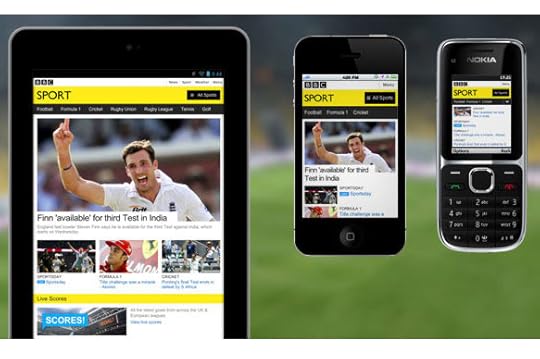
The homepage on a variety of devices
Rather than optimise the mobile sport site for one screen size or device type we've built it responsively so that it adapts and displays the content in a way which makes the most of the device's screen size.
We've taken into account devices up to seven inches wide (including smaller tablets such as the Nexus 7 and Kindle Fire). We recommend users on larger tablets such as iPads continue to use our desktop site.
This responsive approach is part of a wider product strategy within the BBC to provide the most appropriate experience to users whatever their device is.
On this new responsive mobile sport site all devices get the same range of stories, indexes and sport statistics but the layout changes.
If you've got a large screen we'll show you bigger images, more items in the sport-specific navigation bar and more information about the stories on the indexes. If you've got a smaller screen, we'll show fewer images and make those we do show smaller.
The key point here is that we deliver a single page to all devices which simplifies both the development and testing.
Pages are assembled on our platform using PHP.
The PHP or page assembly layer obtains all the data it needs for the final page by calling several RESTful services (for stats, stories, live event updates) before serving the final, complete page to the audience.
Since we assemble a single page for each request it also means that we become extremely cacheable and can benefit from efficient serving of pages using Varnish and Content Delivery Networks in order to reduce the load on our own servers.

New slide-in menu
This means that during times of heavy load (such as every Saturday afternoon!) we are able to serve millions of page requests efficiently.
We will publish more detail on the underlying technical approach in a future post and include detail on the development and testing process, which is an important part of the work we do.
The index pages for football and other selected major sports (cricket, F1, rugby league, rugby union, tennis and golf) all have this new design. Story pages and live text commentaries have been updated too - with the focus on keeping them easy to read on a mobile device.
The navigation across the mobile site has also been updated. You can now access the main sports plus the national UK sport indexes using the menu which slides in from the right when you select the All Sports button. We're also adding a football live scores page and have redesigned the football fixtures and results too.
The site also features easy access to Radio 5 Live to help you get more great live sport content from across the BBC while you're on the go.
We've got lots more great features to add over the coming months. We still have more pages to update with the new look and feel - including the rest of the sport indexes, football team pages and results pages for other sports. Live and on demand video highlights will also be introduced early next year.
For the millions of users who liked the BBC Olympics app this summer, we'll be following up with the BBC Sport app early in the new year too.
The mobile website user experience was designed by Manchester-based agency magneticNorth and then developed further over the summer using feedback from users about how they used the Olympics mobile website and the desktop sport website.
We hope you enjoy the new features and welcome your feedback on how the site looks and works on your mobile device.
Executive Product Manager, Sport, BBC Future Media.
December 5, 2012
Responsive Design on BBC Indonesia mobile site
Hello, I'm Phil Buckley, Executive Product Manager for Future Media News World Service, and I lead the technical and delivery teams there.
I'm very proud that today we have released a new mobile site for BBC Indonesia in Responsive Design.

New look BBC Indonesia mobile site
As far as I can find this is the world's first responsive website in an Asian language and one of the very first non-English responsive sites.
The Head of the News Product Chris Russell has blogged in detail about Responsive Design, a technology which tests your screen size and connection speed and then gives you the best possible experience. This has already been adopted on our English language mobile News site and the new BBC Indonesia site is on the same codebase.
This technology is particularly well suited to the World Service sites. More than half the visitors to BBC Indonesia come on a mobile phone and they come using an explosion of different handsets: last week alone there were more than 1,200 different phones using the site.
These ranged from the newest Apple smartphones to some Nokia feature phones with local manufacturers heavily represented including the magnificently-named Hipstreet HS-7DTB6 and the rather more straight-laced Moral N01.
In the olden days every single one of these would have seen our standard mobile view:

Old mobile view
But now each of those 1,200 phones will display the best thing they can manage.
Basic phones on poor connections will get an experience similar to our old mobile site, for example an image like this:
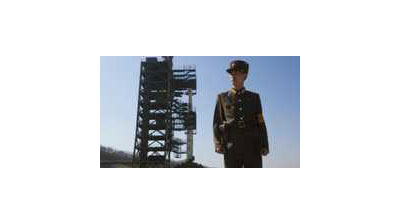
Image displayed on phone with slower connections
This is about 3 Kilobytes (Kb) and is very fast to download but heavily pixelated around the neck and shoulders of the North Korean soldier.
People on a faster connection with a bigger screen will get this image:
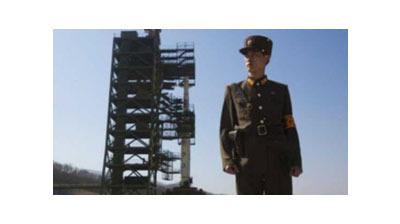
Image on faster phone
This is about 10.5Kb, is much better quality and will scale up to the size of your screen. This allows us to deliver a great experience across this huge range of phones.
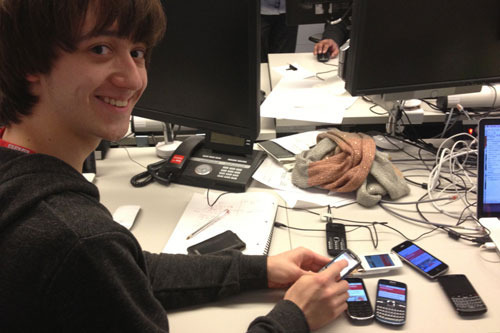
Coder James Lee tests his work on a Nokia C3 and other phones
Another real advantage of the new site is its speed. I have watched videos of people testing this in Jakarta and it is lightning fast, often at least as fast as sites hosted locally.
My career, such as it is, has been in technical and product development - I have no journalistic experience nor do I speak Indonesian.
However, one of the things which struck me during this project is what a fantastic site BBC Indonesia is. I have been testing this site several times a day for the last month and it has amazed me how often there is something new and how interesting the stories look. The pictures are clear and high quality and the journalism seems well suited to mobile phones with short paragraphs and regular breaks. So I hope that our new site carries this content better than the old and gives it the presentation, speed and usability it deserves.
Do let me know your feedback - I would especially love to hear from Indonesian speakers - and whatever you do, let 'kalau tidak rusak jangan diperbaiki' be your watchword.
Phil Buckley is the Executive Product Manager for FM News World Service.
BBC's Blog
- BBC's profile
- 28 followers



